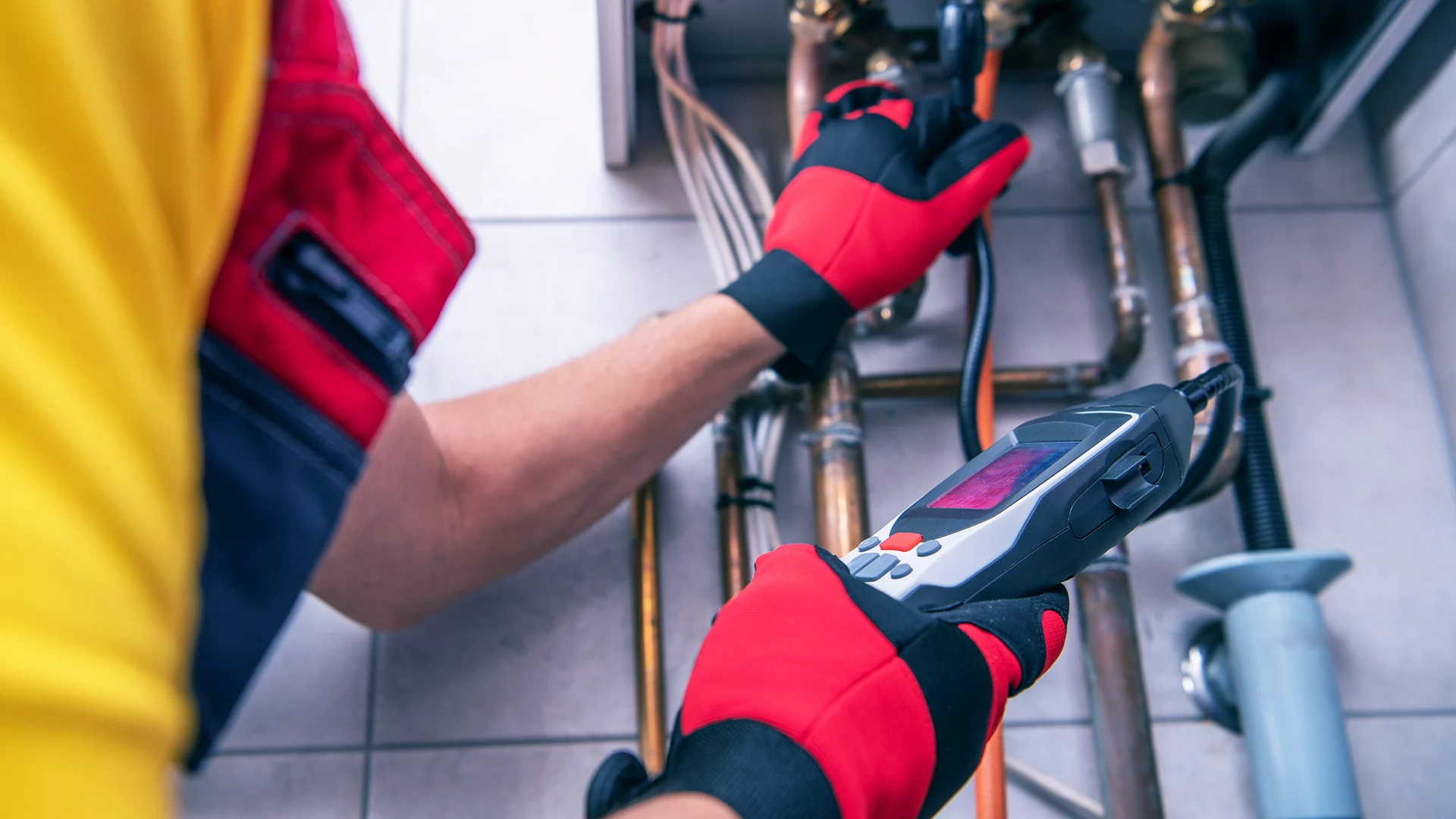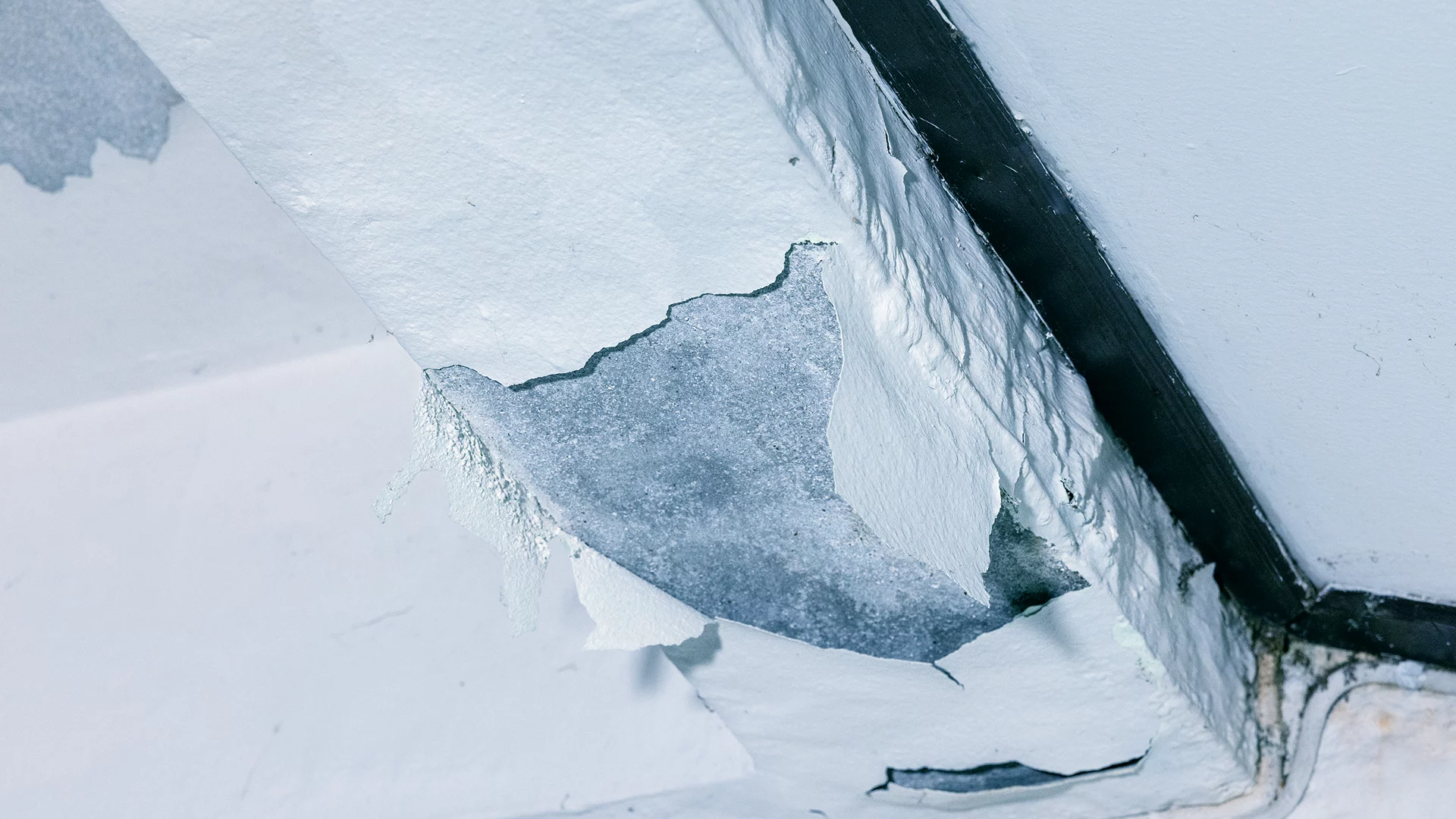You probably don’t think twice about the pipes behind your cool air, but they could carry tens of thousands of litres of water at any moment. One hidden hairline crack is all it takes to flood an entire floor in minutes. In a large commercial building, the HVAC system is a vast, high-stakes network safeguarding operations, people, and sometimes irreplaceable assets.
HVAC accounts for 38% of energy consumption in commercial buildings. Water-based cooling is increasingly favoured. But that efficiency comes with risk. Chilled water loops can stretch for thousands of feet, with pumps moving water at industrial speeds. Even the smallest leak can go undetected—until the damage is done.
If you’re responsible for a building’s resilience, understanding the different types of commercial HVAC systems, where they’re vulnerable, and how to keep them performing under pressure is critical.
What Are Commercial HVAC Systems?
Commercial HVAC systems form the backbone of a building’s climate control and operational stability. Heating, ventilation, and air conditioning work in unison to manage temperature, humidity, and air quality across large, complex spaces. These systems also circulate chilled or heated water through extensive piping networks to meet precise environmental demands.
HVAC performance directly impacts energy costs, tenant satisfaction, asset longevity, and even compliance with safety and environmental regulations. An HVAC fault can halt operations, damage equipment, and trigger cascading failures in minutes in mission-critical settings, from hospitals to data centers.
Unlike residential units, commercial HVAC systems run almost continuously, handle much heavier loads, and are engineered with redundancy and integration in mind. Tied into central building management systems and a key part of commercial property management, they provide real-time oversight and control, enabling proactive maintenance and rapid response when things go wrong. In other words, they’re not just keeping people comfortable but protecting the building’s bottom line and most valuable assets.
![]()
6 Types of Commercial HVAC Systems
1. Single‑Split Systems
These systems pair one outdoor unit with one indoor unit. They’re simple, modular, and cost‑effective for small suites or back‑of‑house areas. Because each zone is independent, you gain control and fault isolation. The trade‑off is scalability: once you have many zones, footprint, service complexity, and part counts become burdens.
2. Multi‑Split Systems
Multi‑split systems connect several indoor units to one outdoor condenser. They reduce outdoor clutter and can simplify installation when roof or façade space is constrained. Commissioning, however, is more exacting. Refrigerant line lengths, charges, and balancing must be precise, and service events can affect multiple zones if not planned well.
3. VRF/VRV Systems
VRF/VRV stands for Variable Refrigerant Flow and Variable Refrigerant Volume. These systems deliver advanced zoning, heat recovery, and excellent part‑load efficiency. They are ideal for mixed‑use buildings where simultaneous heating and cooling across zones is standard.
They are often integrated with broader building management platforms and may require machine identity management to help ensure that every component can be securely identified, authenticated, and monitored.
To retain their efficiency advantage over time, you’ll need preventative maintenance, good documentation, and technicians comfortable with diagnostics.
4. Chilled Water Systems
These central plants generate chilled water that circulates to air‑handling units and terminal devices. Their scale brings efficiency and lifecycle cost advantages, making them ideal for large campuses and high‑rise towers. In many setups, the system works with cooling towers to reject heat from the condenser water loop, which is critical for maintaining chiller performance.
However, increased water risks like valve failures, joint fatigue, and pressure anomalies can go undetected under high flow. A leak can escalate from nuisance to crisis fast if you don’t have specialised monitoring tools to distinguish “normal high flow” from “abnormal but still flowing” in real time.
![]()
5. Packaged Rooftop Units (RTUs)
Packaged rooftop units house all heating, cooling, and air-handling components in a single weatherproof unit installed on the building’s roof. This self-contained design delivers conditioned air directly into the ductwork, making it ideal for low-rise retail, logistics, and light industrial spaces.
They’re easy to deploy, replace, and service without disrupting building operations. The trade-off is zoning flexibility and the higher efficiency achievable with a central plant, though modern RTUs with energy recovery systems have significantly closed that gap.
6. Boiler and Radiator Systems
Lastly, boiler and radiator systems (hydronic heating) use a central boiler to heat water, which then circulates through pipes to radiators or convectors that release warmth into each space. These systems are standard in colder climates and legacy estates for their even, consistent heat. While reliable and robust, they demand well-managed water treatment, combustion safety, and precise control calibration to maintain efficiency and indoor environmental quality.
How to Select the Right Commercial HVAC System
1. Building Size and Occupancy
Start with a realistic map of your spaces. What are their peak densities, schedules, and thermal profiles? A call centre floor, a lab suite, and a cinema demand different ventilation and temperature stability. For example, strict lab safety rules often dictate higher air change rates, specialised exhaust systems, and pressure controls.
Splits or multi‑splits may minimise capex and simplify metering for smaller multi-tenant floors with fragmented leases. Selection should balance today’s occupancy and how often tenants churn, how spaces will be re‑fit, and how much disruption your organisation will tolerate when re‑zoning.
2. Climate Zone and Envelope
Moisture control is as important as temperature control in hot, humid areas, so systems with strong dehumidification, heat recovery, and reheat capabilities are best here. In colder climates, hydronic heating or heat-recovery VRF systems can deliver warmth more efficiently. Your building envelope (walls, windows, insulation) also matters. Well-insulated buildings can run on smaller, more efficient systems; poorly insulated ones need more robust equipment and ventilation.
![]()
3. Cooling and Heating Loads (And Load Profile)
Measure the real heating and cooling demands for each area. Include constant heat sources like IT equipment or kitchens, and account for spaces that can swing from empty to full quickly, such as event halls. Oversized systems waste energy and cost more upfront; undersized systems wear out quickly and can’t keep up during peaks. The best designs use staged capacity, variable speed drives, and sometimes thermal storage to deliver peak performance only when needed.
4. Zoning, Redundancy, and Maintainability
Break the building into zones that match operational needs. Isolate critical areas like server rooms, operating theatres, or trading floors to keep them running if other regions are shut down. Build in redundancy where downtime isn’t an option: extra pumps, chillers, or VRF branches can keep the system running if one fails. And make sure maintenance is practical. Allow easy access to components, standardise parts, and ensure systems support remote monitoring and diagnostics.
5. Controls Integration and Data Strategy
Your Building Management System (BMS) should be the central control hub, pulling data from all HVAC equipment. Choose systems that use open communication protocols and provide meaningful data points like flow rates, pressures, and temperatures. Decide upfront what you need to track and how you’ll use it. Integrating HVAC data with tools like WINT’s water intelligence platform means your team can see air-side and water-side issues in the same dashboard, helping them act faster and more confidently.
6. Energy, Carbon, and Lifecycle Cost
The cheapest system to buy isn’t always the cheapest to operate. A realistic cost model should factor in actual schedules, utility rates, and likely shifts in energy prices or carbon regulations over the next decade. Gas boilers, for example, could face steeper running costs as electrification policies and carbon taxes advance.
Economisers can significantly reduce energy use by drawing in cool outside air instead of mechanically chilled air when conditions allow, easing the load on chillers. This delivers notable savings in suitable climates and building types, particularly in spring and autumn. However, their effectiveness depends on proper design and controls, and use may be limited in humid, polluted, or hot environments.
6. Water Risk Tolerance
In high-flow systems, small leaks can go unnoticed until they cause significant damage. Automatic shut-off valves are only as good as the detection technology feeding them. WINT’s HVAC-specific AI learns your system’s standard flow patterns and can detect even minor deviations early, isolating just the affected section so the rest of the system stays operational. Building this into the original specification is far more effective and cost-efficient than adding it after a costly incident.
![]()
5 Tips for Designing and Managing Resilient Commercial HVAC Systems
1. Design for Redundancy, Modularity, and Smart Zoning
Plan HVAC around operational importance, not just square metres. Critical zones should have their isolation and backup. Modular chillers, dual risers, and paired pumps with auto-alternation reduce single points of failure. Smart zoning allows you to shut down non-critical areas during an incident while keeping priority spaces running.
2. Leverage AI-Powered Leak Detection
High-flow chilled-water systems can mask leaks until damage is done. AI-powered leak detection tools like WINT learn your system’s standard flow patterns and spot even minor anomalies in real time, triggering alerts or isolating only the affected zone. This keeps the cooling operational while containing the problem, a critical advantage in mission-critical environments where downtime and damage carry high costs.
3. Establish Proactive Preventive Maintenance
A preventative maintenance program will help you avoid emergency repairs, but only if it’s data-driven. Track key performance variables and set PM intervals based on run-hours and actual condition. For chilled-water systems, go beyond basic strainers and insulation checks to include differential pressure trends, valve cycle counts, and shutoff tests. Combine this with root-cause analysis to prevent repeat failures.
![]()
4. Automate Alerts and Incident Response
During a water event, every minute counts. Link alerts to on-call schedules, SMS, and incident-management platforms so the right person gets actionable details instantly, including zone location, valve ID, recent flow trends, and recommended actions. WINT’s autonomous edge devices and backup connectivity ensure this protection continues even if the network or power goes down.
5. Segment Critical HVAC Zones
Treat water risks like electrical risks and compartmentalise them. Equip high-priority branches with faster isolation valves, dedicated sensors, and tailored alarm thresholds. Automate shutoff for low-priority zones when anomalies occur, but require human confirmation before cutting supply to high-criticality systems, such as operating theatres. This approach avoids unnecessary full-building shutdowns and aligns protection with business impact.
The Overlooked Threat in HVAC and How to Eliminate It
While energy efficiency dominates most HVAC discussions, water failures are often the fastest route to catastrophic loss. High-velocity leaks can damage finishes, shut down critical equipment, and take entire floors offline. Pressure surges, faulty valves, or overlooked maintenance bypasses can introduce silent vulnerabilities that only surface when it’s too late. The solution is precision monitoring and automation that detects and responds before people can.
Whether designing a new plant, retrofitting a tower, or protecting a mission-critical floor, build water resilience into your specification from day one. Define the data points you’ll track, the trigger-action thresholds, and the response sequences that balance protection with continuity. The return is clear: fewer floods, fewer outages, stronger SLA performance, and measurable savings in downtime and repairs.
Integrating water intelligence into your HVAC framework is essential to achieve this in practice, particularly in chilled water loops. WINT’s high-accuracy flow meters, autonomous edge devices, and HVAC-specific AI learn your system’s usual patterns, spotting even the most minor deviations and isolating only the affected section so the rest of the system stays operational. Instant alerts feed directly into your incident-management tools or BMS, ensuring swift, informed action, even during power or network outages.
Book a consultation with our team to see how you can protect your HVAC systems without compromising performance.


